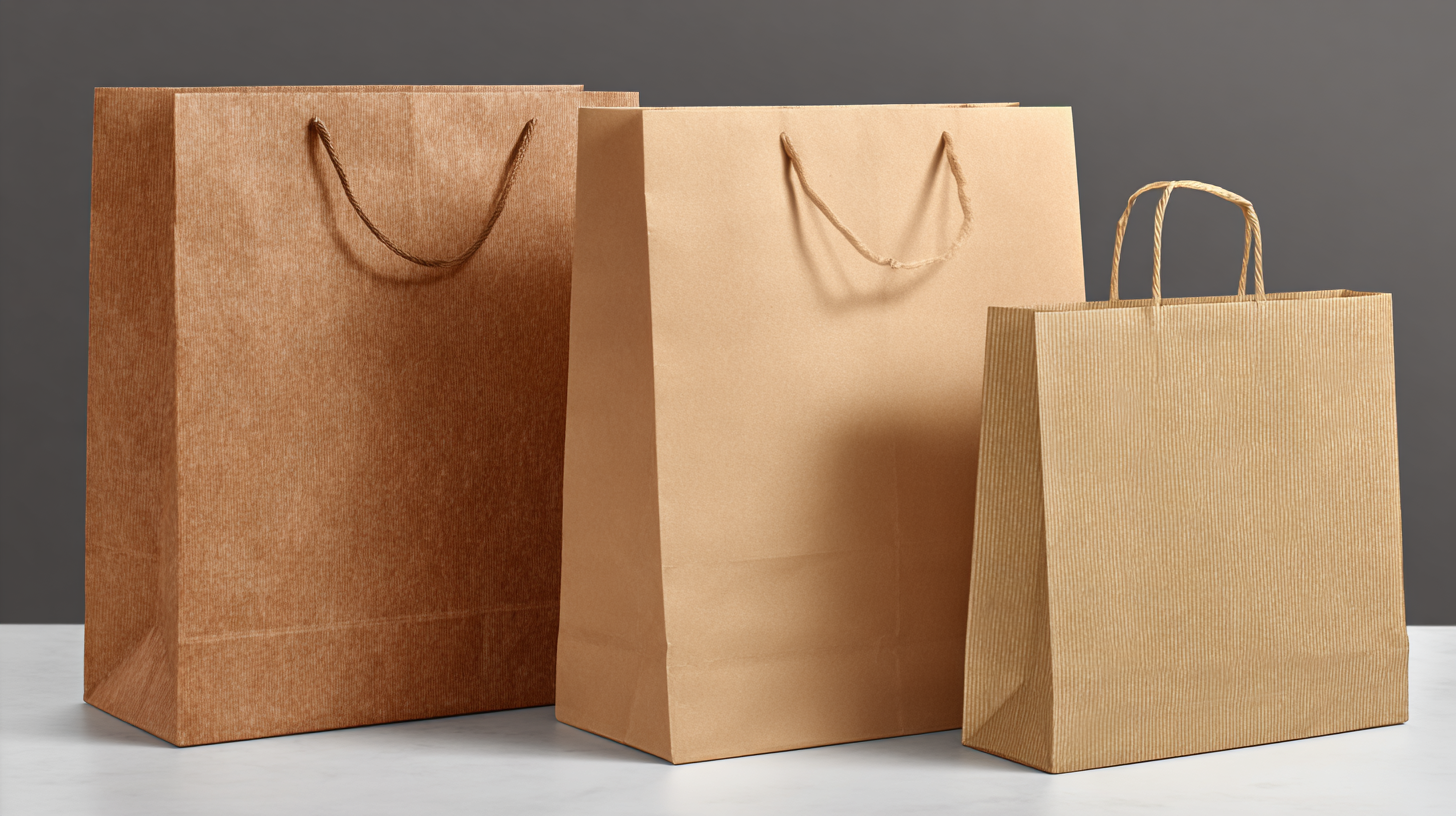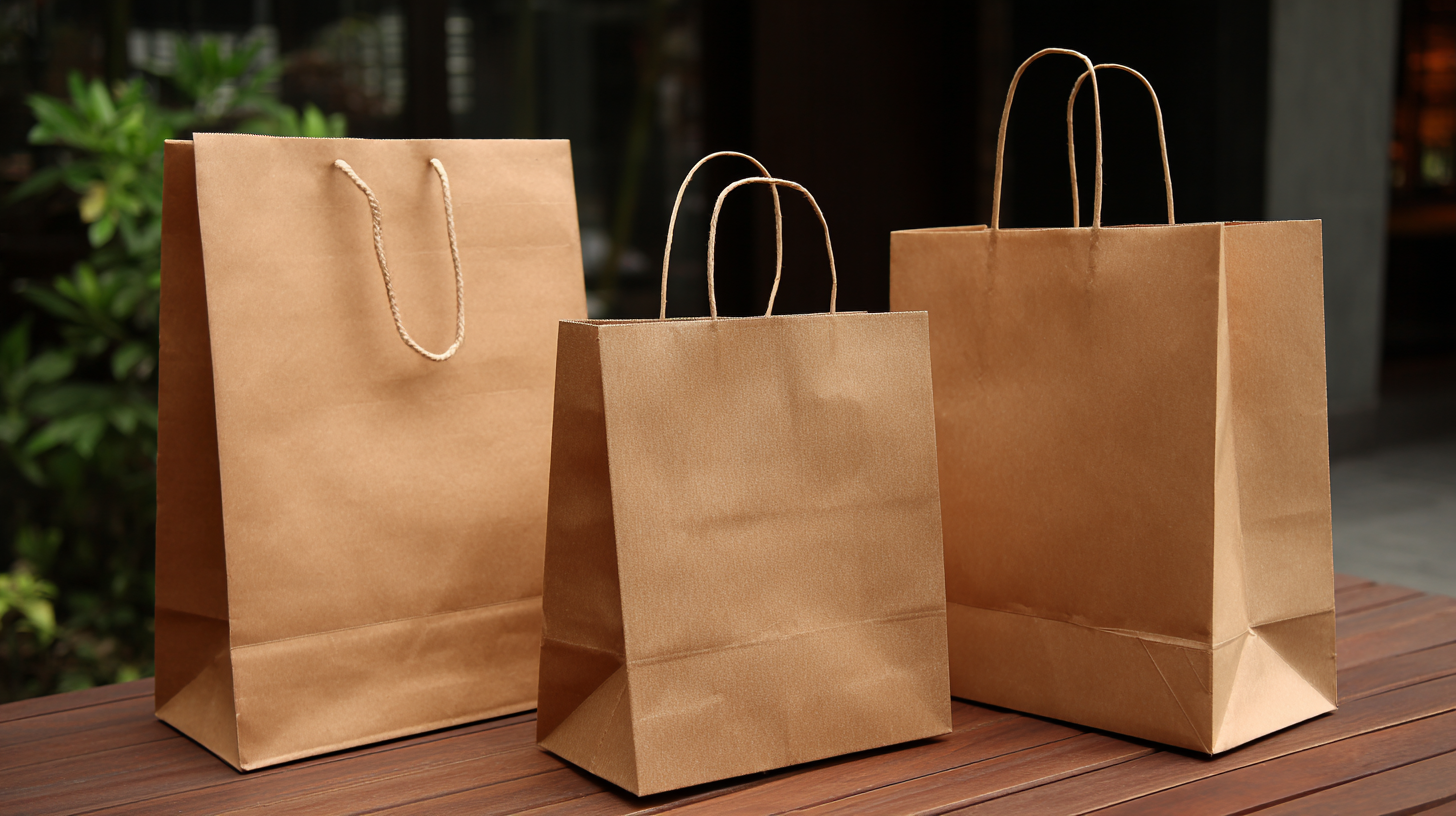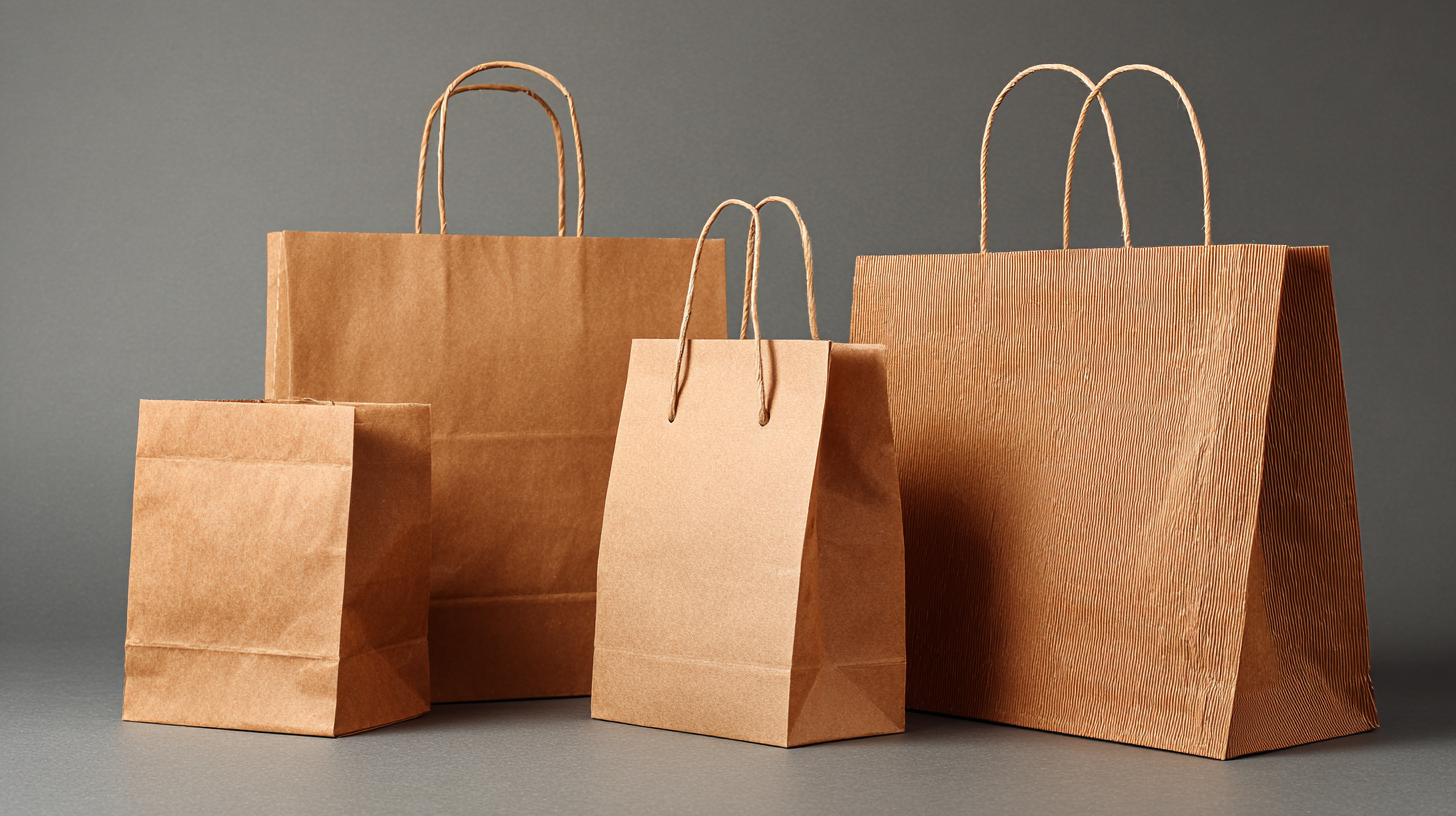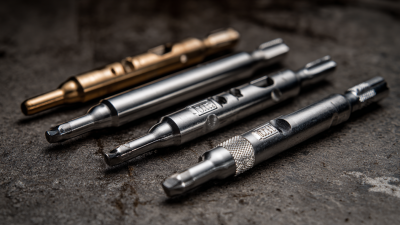How to Choose the Right Kraft Paper Bag for Your Business Needs
In the evolving landscape of sustainable packaging, the Kraft Paper Bag has emerged as a highly sought-after solution for businesses aiming to balance functionality with environmental responsibility. According to a report by Smithers Pira, the global market for paper bags is projected to reach $6 billion by 2024, driven by an increasing demand from eco-conscious consumers and stricter regulations on single-use plastics. Businesses across various industries, from food retail to boutique fashion, are recognizing the importance of selecting the right Kraft Paper Bag not only to enhance their brand image but also to meet consumer expectations for sustainability. Choosing the ideal Kraft Paper Bag tailored to your business needs is crucial, as it can impact everything from product presentation and practicality to customer satisfaction and loyalty. This guide aims to provide essential insights for businesses looking to make informed decisions when selecting Kraft Paper Bags that align with their operational goals and sustainability commitments.

Identifying Your Business Requirements for Kraft Paper Bags
When choosing the right kraft paper bag for your business, it’s crucial to first identify your specific business requirements. This involves understanding the nature of your products, target audience, and environmental commitments. For organizations in sectors like food and beverages or retail, the sustainability aspect is particularly significant. With the growing demand for eco-friendly packaging, selecting kraft paper bags that not only fit the product size and weight but also align with sustainable practices can enhance your brand’s reputation.
Additionally, consider the design and functionality of the kraft paper bag. If your business requires bags for e-commerce purposes, you'll need to invest in durable, secure bags that ensure product safety during transit. Conversely, retail environments might demand visually appealing designs that attract customers. Moreover, as the market for kraft paper bags continues to expand, keeping an eye on industry trends and innovations—such as recycled materials and cost-effective manufacturing—will be beneficial. By thoughtfully assessing your business needs, you can select kraft paper bags that will effectively support your operations and sustainability ambitions.
How to Choose the Right Kraft Paper Bag for Your Business Needs
| Bag Type | Size (inches) | Weight Capacity (lbs) | Usage | Eco-Friendliness |
|---|---|---|---|---|
| Brown Paper Shopping Bag | 10 x 5 x 13 | 15 | Retail | 100% recyclable |
| Kraft Flat Paper Bag | 12 x 15 | 10 | Food Service | Biodegradable |
| Kraft Merchandise Bag | 8 x 4 x 10 | 8 | Gifts/Stationery | Recyclable |
| Kraft Paper Food Bag | 6 x 3 x 9 | 5 | Takeout | Compostable |
| Kraft Paper Gift Bag | 10 x 8 x 12 | 12 | Gifts | Recyclable |
Understanding Different Types of Kraft Paper Bags Available
When choosing the right Kraft paper bag for your business, it’s crucial to understand the different types available in the market. Kraft paper bags come in various forms, including flat paper bags, square bottom bags, and self-venting bags. According to a report by Smithers Pira, the global market for paper bags is projected to reach $7.94 billion by 2024, largely due to the increasing demand for sustainable packaging solutions.
Flat paper bags are ideal for retail environments, while square bottom bags provide more stability and capacity for heavier items.

Another key type is the self-venting bag, which is particularly advantageous for the food industry as it allows for airflow, thereby preserving freshness. Astoundingly, the food segment alone accounts for over 40% of the total paper bag market, highlighting the growing trend of eco-friendly practices in food service. Each type has unique features that cater to different business needs, making it imperative for companies to evaluate their requirements carefully before making a choice.
As sustainability continues to drive consumer preferences, opting for the right Kraft paper bag can not only enhance brand image but also contribute to environmental conservation efforts.
Evaluating Eco-Friendly Options for Sustainable Packaging
When selecting kraft paper bags for your business, considering eco-friendly options is crucial, especially in today’s environmentally conscious market. According to a report by Smithers Pira, the global market for sustainable packaging is projected to reach $400 billion by 2027, driven by increasing demand for products that minimize environmental impact. Kraft paper bags, being biodegradable and recyclable, offer an excellent alternative to plastic bags, which contribute significantly to pollution and waste.

Furthermore, a study conducted by the Paper & Packaging Board found that 70% of consumers prefer to purchase products packaged in paper rather than plastic. This preference is not just a trend but reflects a growing commitment to sustainability. By choosing kraft paper bags, businesses can align themselves with consumer values that prioritize eco-friendliness, potentially boosting customer loyalty and sales. Additionally, these bags can be produced from recycled materials, further enhancing their sustainability profile and appealing to a demographic that prioritizes environmentally responsible practices.
Assessing Size and Capacity Needs for Your Products
When selecting the right Kraft paper bag for your business, it’s crucial to assess the size and capacity requirements of your products. Just as modern research has focused on evaluating the capacity of various products to address specific needs, businesses must determine the appropriate bag dimensions to effectively hold and protect their goods. For example, a bakery might require smaller bags for pastries while larger bags are ideal for bulk items. Understanding the actual volume of the products being packaged ensures that customers receive exactly what they expect without excess packaging waste.
Tips: Consider the weight and fragility of your products when choosing bag size. Heavier items will need sturdier, larger bags, while lighter goods can be packaged in smaller, less sturdy options. Additionally, think about your target market; a stylish, appropriately-sized bag can enhance customer experience and brand perception.
Furthermore, it’s important to analyze the demands of your operations. Much like a health technology assessment identifies capacity needs in healthcare systems, conducting an internal review of your supply chain will aid in selecting the best Kraft paper bags that align with your business’s requirements. Be sure to account for any seasonal fluctuations in demand or product size changes to keep your packaging efficient and relevant.
How to Choose the Right Kraft Paper Bag for Your Business Needs
Comparing Costs and Quality for Effective Budgeting
When selecting the right Kraft paper bag for your business, a critical aspect to consider is the balance between cost and quality. According to a recent report by Smithers Pira, the global demand for paper bags is projected to grow at a CAGR of 4.3% between 2021 and 2026, underscoring the increasing reliance on sustainable packaging solutions. Businesses must evaluate their budgetary constraints against the need for durability and brand representation. Lower-priced options may seem appealing, but they often lack the robustness required for heavier items, leading to increased returns and customer dissatisfaction.
Moreover, the quality of Kraft paper bags can significantly impact your overall marketing strategy. A study from Grand View Research suggests that premium Kraft paper bags enhance brand loyalty, as consumers often associate high-quality packaging with quality products. By investing in higher-quality bags, businesses can not only improve customer perception but also reduce costs in the long run by minimizing damages and replacements. Therefore, understanding the trade-offs between low-cost bags and the potential benefits of quality can lead to more effective budgeting and enhanced brand reputation.
Related Posts
-

Understanding the Best Screwdriver Bit Options for Every Job
-

Unveiling the Technical Specifications of the Ultimate Glasses Cloth for Global Buyers
-

Exploring the Future of Accessories in 2025 How to Choose the Best Leather Glasses Pouch
-

8 Powerful Reasons to Choose the Best Optometry Equipment for Your Practice
-

How to Choose the Right Optometry Equipment for Your Practice Success
-

The Ultimate Guide to Choosing the Perfect Spectacles Case for Every Lifestyle
